AMD Opens Up Threadripper Pro: Three New WRX80 Motherboards
by Gavin Bonshor on January 12, 2021 12:15 PM EST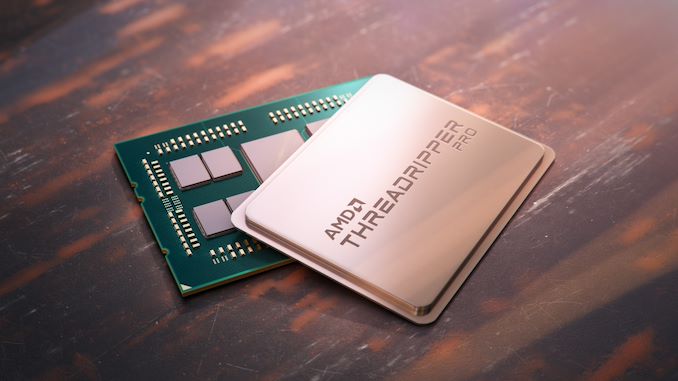
Stepping out of its supposed 'exclusivity deal' with Lenovo, who had the first rights to Threadripper Pro in the ThinkStation P620, motherboard vendors have started showing off some of its WRX80 motherboard models designed for AMD's Ryzen Threadripper Pro processors. Some of the benefits of the new platform over standard Threadripper include eight-channel memory and up to 128 x PCIe 4.0 lanes, which is double that of the non-Pro variants. While this sounds like EPYC, it sits between the two with only 2 TB DRAM support. It's time to showcase what we know, including three new models based on the WRX80 chipset.
The AMD WRX80 chipset benefits from eight-channel memory for increased bandwidth when compared to quad-channel Threadrippers and dual-channel Ryzen configurations, with capacity for up to 2 TB when used with DDR4 LRDIMM memory. It also includes support for both ECC and non-ECC memory at DDR4-3200. The biggest jump in regards to specification compared to regular TR is in its PCIe support, with up to 128 PCIe 4.0 lanes available, which in turn increases the amount of PCIe slot real estate vendors can use.
Patrick Kennedy from ServeTheHome has affectionately called this platform 'WEPYC', as in 'Workstation EPYC', as it is more like an EPYC than it is a Threadripper.
Supermicro M12SWA-TF
The Supermicro M12SWA-TF is dominated by its transposed sWRX8 socket (LGA 4094) and includes eight horizontal memory slots, with support for up to 1 TB of DDR4-3200. The Supermicro has support for AMD Ryzen Threadripper Pro processors up to 64 cores, including the entry-level 16 core variant. It is using an all-black PCB, with a cooling fan attached to the heatsink, with HEDT chipsets having a tendency to run quite warm. This will be even more apparent with PCIe 4.0 lanes over passively cooled options that use PCIe 3.0.
It is E-ATX in size, which is fully utilized with an impressive six full-length PCIe 4.0 x16 slots. This includes support for two triple-slot or three dual-slot graphics cards, which will depend on the configuration a user opts for. For storage, the M12SWA-TF includes four SATA ports and four PCIe 4.0 x4 M.2 slots that include support for RAID 0, 1, 5, and 10 arrays. Supermicro has also incorporated two PCIe 4.0 U.2 slots, with support for just RAID 0 and 1 arrays. The M12SWA-TF also uses an ASpeed's 7th generation AST2600 BMC controller with one D-sub video output on the rear for physical IPMI access. (Ian: Oooh, AST2600 is new, isn't it?)
The board also includes support for up to five USB 3.2 G2 ports, with four Type-A and one Type-C, and five USB 3.2 G1 Type-A ports including a mixture of support on the rear panel and through internal headers. There's also two USB 2.0 ports available, with ten 4-pin fan headers, including two for CPU fans and eight for chassis fans. Supermicro is using Realtek's new and unannounced ALC4050 HD audio codec, with a secondary ALC1220 codec. Networking support includes two RJ45 ports, including one powered by an Aquantia AQC113C 10 GbE controller, with an Intel I120-AT Gigabit controller also allowing for IPMI access.
ASUS WRX80 Pro WS Sage SE WIFI
Another model expected for AMD's Ryzen Threadripper Pro is the ASUS WRX80 Pro Sage SE WIFI. While we don't have any technical information and specifications from ASUS itself, we do have an image of it that VideoCardz reported on. There's a lot to go on from just the image, and it looks as though ASUS will fully utilize all of the PCIe 4.0 lanes from Threadripper Pro.
The ASUS WRX80 Pro WS Sage SE WIFI is using seven full-length PCIe 4.0 x16 slots, with eight memory slots in two banks of four flanking the transposed LGA 4094 socket. The design includes an all-black PCB, with contrasting black heatsinks for the chipset, M.2 slots, and power delivery. The memory will operate at 1PDC, with eight slots likely to offer similar memory support to Supermicro's M12SWA-TF model, although we will find out more when ASUS officially unveils it.
We do know that the WRX80 Pro will include Wi-Fi capabilities, most likely using one of Intel's Wi-Fi 6 interfaces. From the design, it looks like it will include eight SATA, three PCIe 4.0 x4 M.2, and two PCIe 4.0 x4 U.2 ports for storage, but hopefully, ASUS will shed more light on the official specifications soon.
GIGABYTE WRX80 SU8
Based upon a leak from VideoCardz, GIGABYTE is also joining the fray with its WRX80 SU8 model. As it stands, we don't have official specifications or any details from GIGABYTE itself, it looks to be using a large PCB, likely EEB form factor from what we can see. Like the other WRX80 models, the GIGABYTE includes eight memory slots for eight-channel memory, with ECC and non-ECC types supported. The slots are split into two pairs of four and are horizontally aligned which surrounds the transposed LGA 4094 socket.
The GIGABYTE WRX80 SU8 includes seven full-length PCIe 4.0 x16 slots, with a large chipset heatsink on the right-hand side. While it's difficult to determine a lot of the storage specifications from the image we have from VideoCardz, we can see it may include three to four Ethernet ports on the rear panel.
Overall
In speaking with one of the vendors, their main market is going to be system integrators - people who build and sell workstations. I contacted a high-end system integrator and confirmed that they are building a TR Pro machine, although it is very much still a work in process. The vendor, when asked about on-shelf availability, said that they don't particularly plan on doing a full retail packaging, but should AMD push the TR Pro CPUs into the consumer channel, they will prepare the appropriate boxing. In that light, as it stands, it looks like it will depend on AMD to decide if they want to enable the regular consumer retail channel.
At this time, we don't have any information on pricing or when the aforementioned WRX80 models for AMD's Ryzen Threadripper Pro will be launched.
Interested in more of the latest industry news? Check out our CES 2021 trade show landing page!


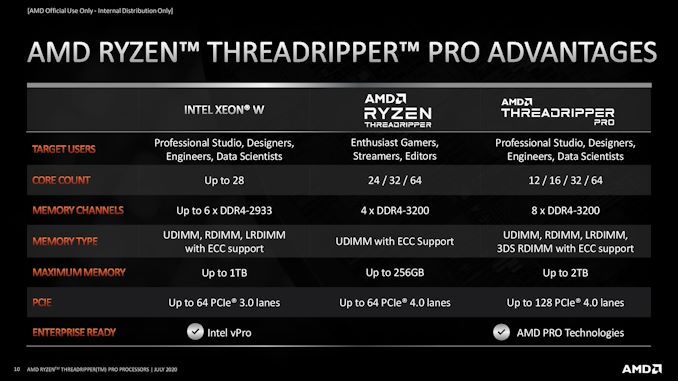
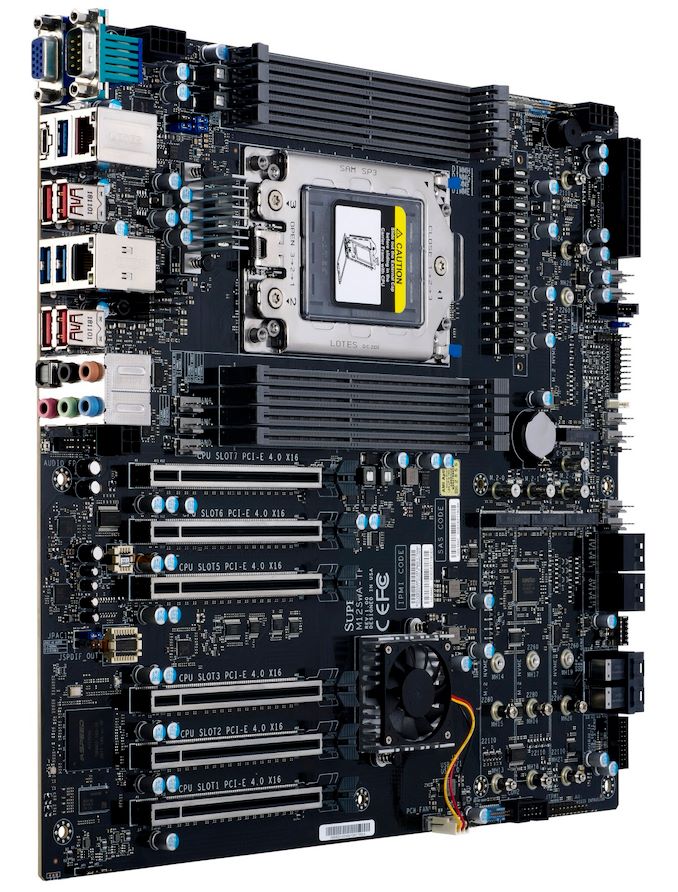
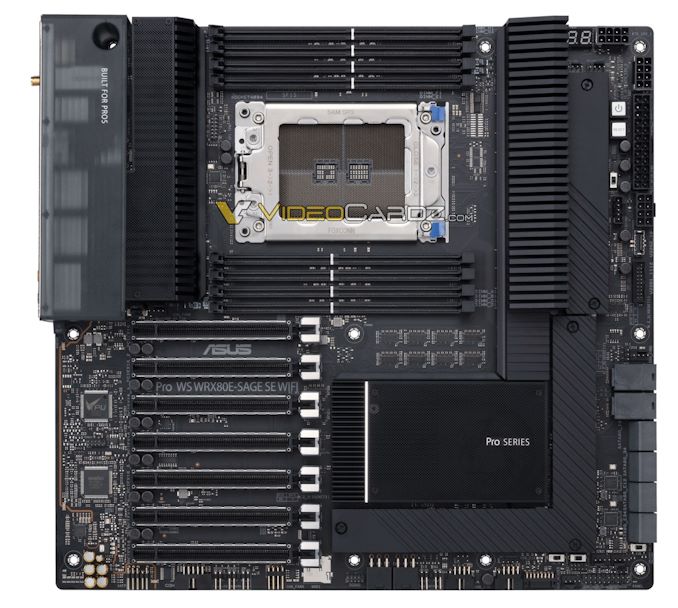
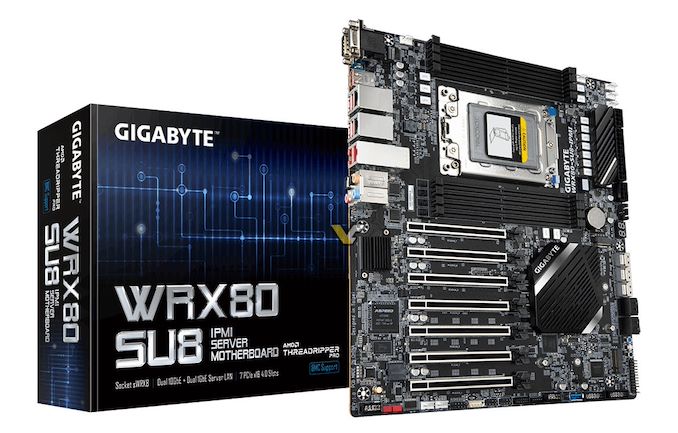








27 Comments
View All Comments
Pessimism - Tuesday, January 12, 2021 - link
I can already hear the whine from the cheap chipset fan on the Supermicro. A slightly larger and higher quality fan with an appropriate shroud could have nicely cooled the chipset and the adjacent m.2 devices.Ej24 - Tuesday, January 12, 2021 - link
Looks like a 40mm, replace it with a 40mm Noctua. If you know the hole spacing you could also find a suitable, larger/taller heatsink should you prefer that too. I've done that on several motherboards.Ej24 - Tuesday, January 12, 2021 - link
You're right though, on second glance it is particularly wimpy. Definitely slap a noctua on it at minimumSamus - Thursday, January 14, 2021 - link
Hopefully they have the foresight to use a decent fan in the first place. For what these boards are inevitably going to sell for, I’d expect a NMB/Panaflo or Noctua (not sure they are an OEM - but they could be on such a niche product) class fan with a 10 year lifespan.Olaf2k4 - Wednesday, January 13, 2021 - link
You can always replace it with a fan from EBM PAPST... The board will disintegrate from rust before those magnetic bearing will break :)abufrejoval - Tuesday, January 12, 2021 - link
Well, if these TR-pro CPUs were freely available, too, this would be really excellent news.But given that these chips will be segmented at packaging and fabs running at full capacity with queues only growing, I wonder just how meaningful this is: I guess you can't even use left-over/recycled EPICs and plug them into these (apart from the vendor lock issue).
ZoZo - Tuesday, January 12, 2021 - link
I had a quick look online, there doesn't appear to be anything close to a shortage of Zen 2-based SKUs whether Ryzen or EPYC. And those new TR Pros are Zen 2-based. Are you confused by the Zen 3 shortages?abufrejoval - Wednesday, January 13, 2021 - link
I'd be surprised if you'd ever see TR-pro sold online.Since they launched this segment late and seemingly out of the blue, one explanation was that the product is about getting rid of surplus stockpiles of Rome SKUs, since you can't repurpose chiplets post packaging. TR-pro seems doable from EPYC chips post packaging via fuses and microcode updates and they seem a logical escape valve for surplus.
For AMD the TR-pro segment would be less attractive than EPYC, because they'd make more money selling that silicon as servers. And the TR-pro chiplets don't seem to be second rate bins, since their only limitation is RAM capacity (something AMD swore they'd never 'segment' originally).
I don't think AMD is still making Zen 2 CCDs when they can make Zen 3 CCDs instead, since they are on the same process and fab resources are a major limitation. So anything Zen 2 now is likely from stock and thus limited.
Milan seems to be backward compatible from Rome from a socket perspective so whoever has a fitting use case for EPYC class compute in a workstation form factor would probably prefer to buy Zen 3 based TR-pro chips, because they are quite simply better in any way for very little additional silicon die area and production cost.
And I just don't see how that segment might see a lot of packaged SKUs when there is a tight constraint on the fabbing of the chiplets. Again, I only see it receiving significant volumes, once the more attractive channels are saturated.
blkspade - Thursday, January 14, 2021 - link
These aren't really out of the blue. They were announced months ago, but Lenovo was given temporary exclusivity with their Thinkstation. There were whispers of the WRX80 when the Zen 2 Threadrippers were coming out.guyr - Tuesday, March 2, 2021 - link
NewEgg has them listed as available today:https://www.newegg.com/threadripperpro/EventSaleSt...
Pricing is too rich for me, I think I'll make due with 4 memory channels. :)